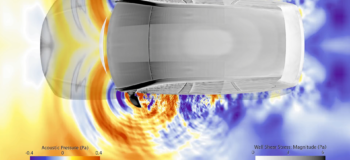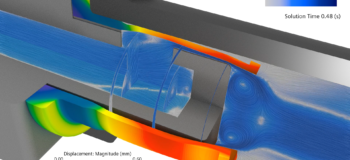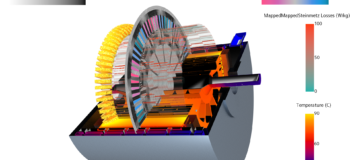Simcenter STAR-CCM+ 2022.1 Released! What’s new?
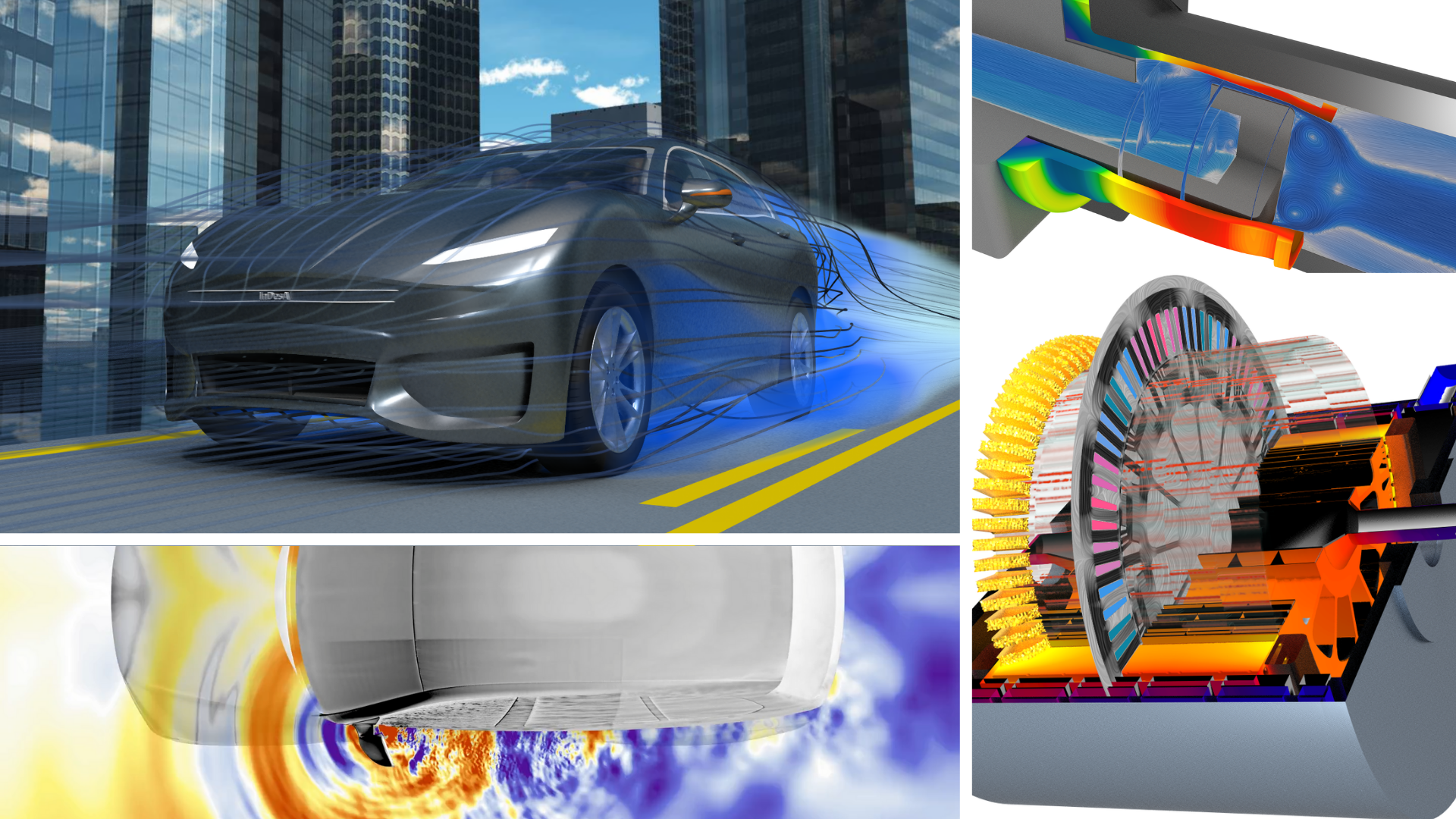
Faster turn-around times at lower computational hardware investments is an ever-ongoing demand to leverage CFD (Computational Fluid Dynamics) simulations for efficient product development.
With Simcenter STAR-CCM+ 2022.1, we release a host of exciting new features that allow you to go faster while modeling the complexity of today’s products, in an integrated simulation environment.
Learn how to use Support Center
New enhancements in Simcenter STAR-CCM+ are aimed at helping you:

Go faster
Run faster, more cost efficient CFD simulations through GPU enabled acceleration
Graphics Processing Unit (GPU) enabled acceleration in Simcenter STAR-CCM+ 2022.1 will let you run simulations faster than ever, at a significantly lower per-simulation cost compared to CPUs.
With its first release in 2022.1 GPU enabled acceleration is leveraging NVIDIA’s CUDA platform and the AmgX solver. It supports both steady and unsteady, constant density flows using the segregated solver. GPU-based calculations are compatible with most turbulence models, including RANS, DDES, and Reynolds Stress Models. In addition, most standard reports, monitors, and field functions are supported.
First vehicle aerodynamics benchmarks carried out in collaboration with NVIDIA prove that by utilizing GPUs you can significantly benefit from savings in hardware cost and power consumption. An estimate for identical turnaround times as CPUs would be up to 40% of the hardware cost and 10% of the power consumption when using GPUs. One HGX server consisting of 8x NVIDIA A100 GPUs can replace more than 50 CPU nodes (more than 2000 CPU cores) achieving equivalent simualtion turn-around times. On the cloud, with GPU-based computing, this equates to cost savings of even up to 70% compared to equivalent CPU-based simulations.
Therefore, this will enable aerodynamics CFD engineers and alike to massively improve their simulation throughput at equivalent hardware investments with an increased per-dollar performance of GPUs compared to CPUs.
With this release, the door to a new era of CFD simulation speed-up techniques has been opened.
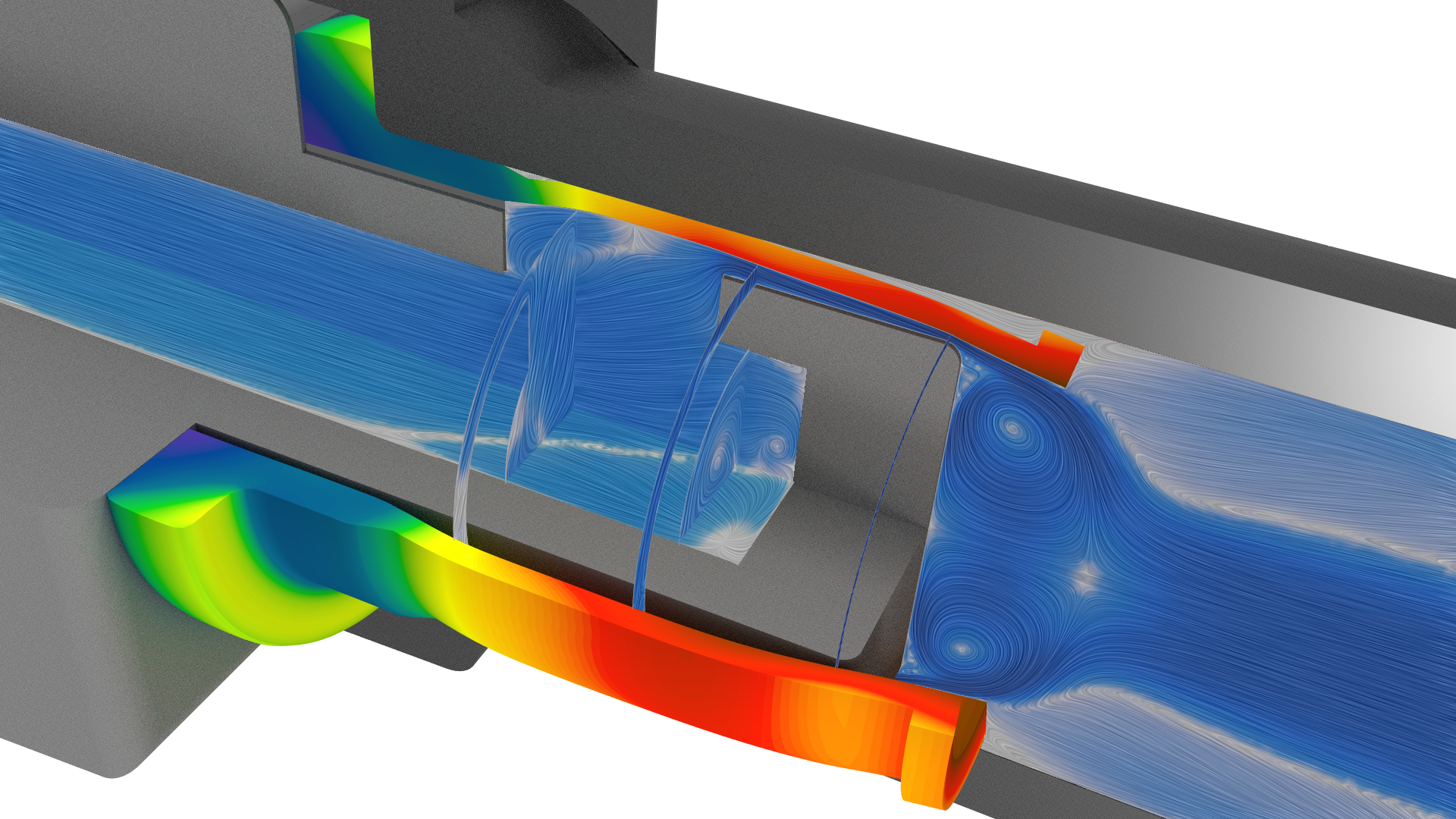
Model the complexity
Make faster side-mirror noise predictions with the Perturbed Convective Wave model
The increasing establishment of electric vehicles has made vehicle aeroacoustics a critical area to ensure passenger comfort.
With Simcenter STAR-CCM+ 2022.1 we have made it easier to set up and run fast and consistent aeroacoustics simulations for sources with near-field observers, like side mirrors. The Perturbed Convective Wave model reduces the turnaround time. This is possible with the ability to use coarser meshes and larger time-steps while delivering accurate and consistent results with minimum user effort.
Together with the Lighthill Wave model from version 2021.3, this enables you to design the next generation of low noise driving experience.
Model the most complex FSI problems including mechanical contacts
Applications such as seals, gaskets, valves, and nozzles imply fluid-structure interaction (FSI), in conjunction with mechanical contact between solid bodies. Contact modeling is oftentimes neglected due to its highly non-linear nature, leading to a risk of missing relevant effects on product performance.
With Simcenter STAR-CCM+ 2022.1 you can simulate frictionless contact of an elastic body with any rigid part. We enable you to model the complexity of applications involving elastic bodies, mechanical contact, and FSI in one single simulation.
This opens the door to tackling a broad range of engineering problems without having to compromise on simulation fidelity.
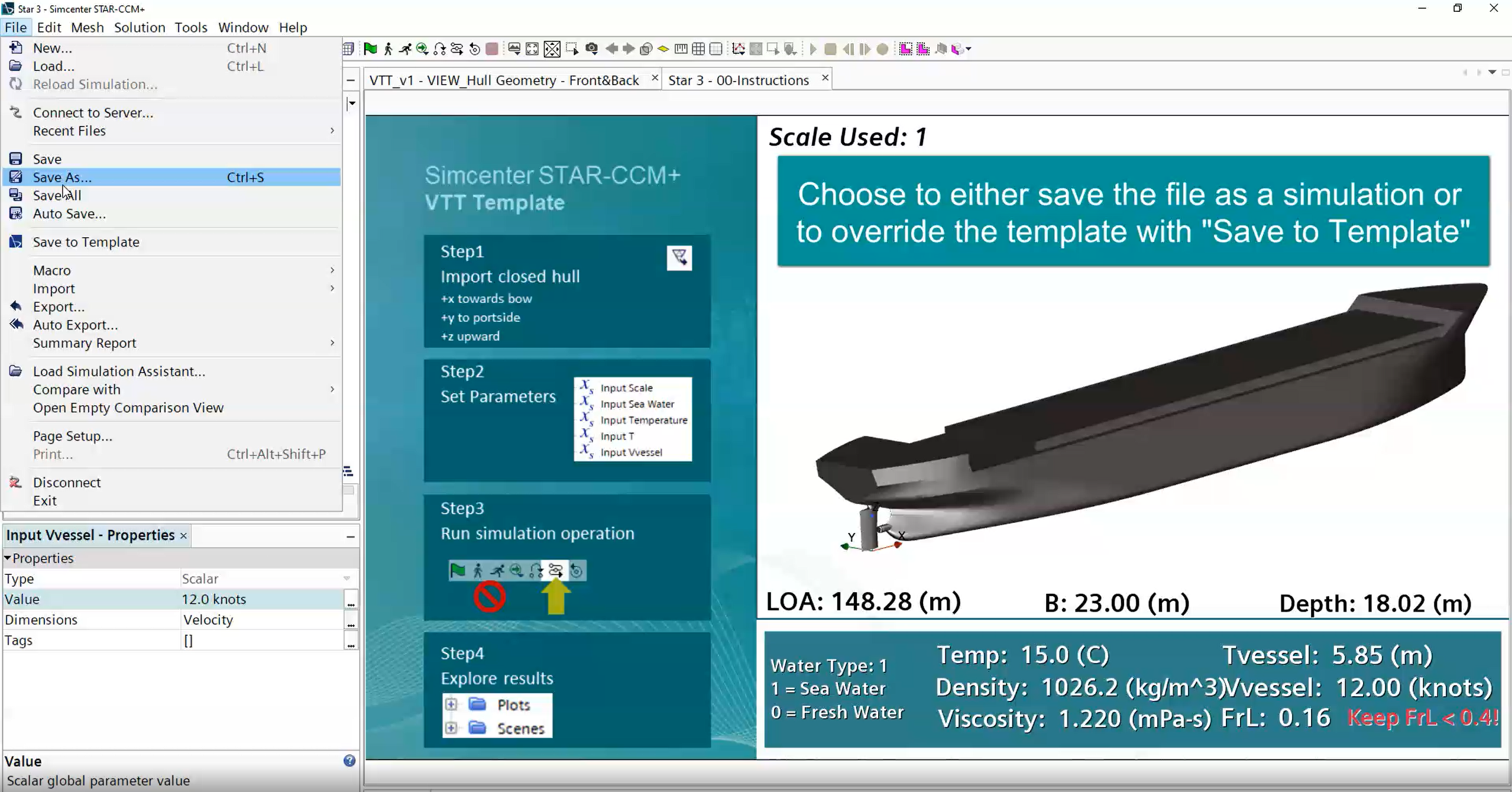
Explore the possibilities
Easily share and execute templated simulation workflows
Automated workflows are the key to ensuring robust and reproducible CFD simulations providing consistency across users inside an organization.
With Simcenter STAR-CCM+ 2022.1 the concept of Simulation Templates is formalized. CFD method developers can now save their simulation setup and workflow to a designated template file “simt”.
With the new option, a layer of protection and the possibility to create a new simulation file directly from a template are also added. This makes it easier to avoid overwriting the actual template or creating too many versions of it.
Simulation template files enable sharing and deploying of fully automated workflows. It ensures consistent usage of best practices and makes template users productive immediately to focus on engineering better products.
Share your simulation results on any device, anytime, anywhere without a license
Easily sharing CFD simulation results with a diverse range of stakeholders is critical in today’s engineering environment. Sharing simulation results using images or animations, while powerful, have their limitations. Limitations in terms of their effectiveness and convenience, when trying to interactively communicate, explore and discuss complex 3D flow features.
With Simcenter STAR-CCM+ 2022.1 we are launching the new Web Viewer Client. The web client allows you to load, show and explore any simulation scene file from your local machine without needing any license or installation. Within a web browser, you can intuitively interact with a simulation result, zoom, pan, or rotate. On top of three-dimensional fields, you can visualize 2D plots, allowing you to quantitatively assess and communicate critical areas and properties of interest.
To access the Web Viewer Client, you just need to visit a dedicated web address from your web browser.
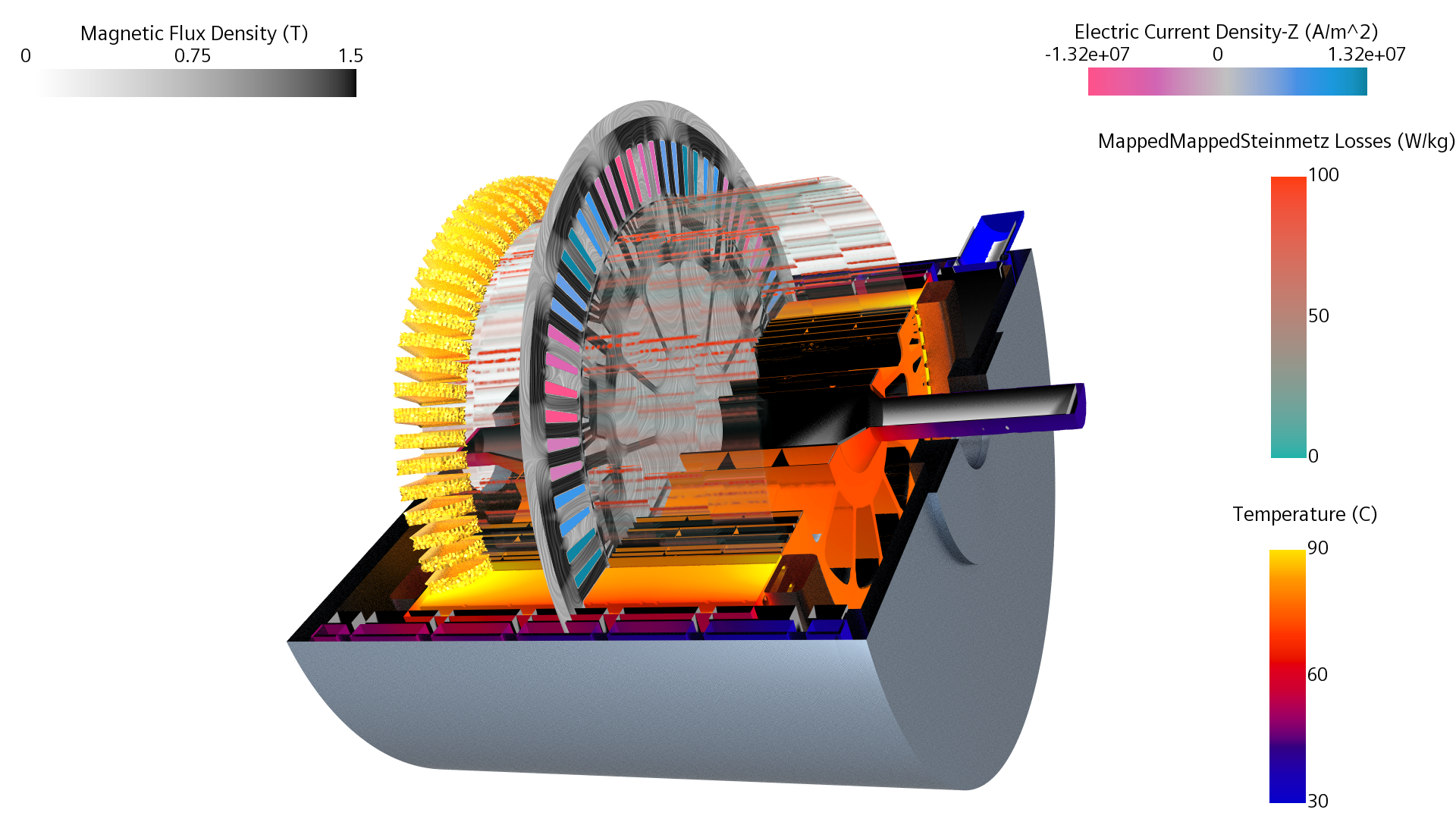
Stay integrated
Quickly setup e-machine simulations for high fidelity loss predictions
To cope with the complexity of electric machine design, it is important that electrical and thermal engineers can work seamlessly across their simulation domains.
In Simcenter STAR-CCM+ 2022.1, electro-thermal simulations are made easier through the import of electric machines’ design files from:
An automated workflow is using the geometry, materials data, and machine conditions in the file to prepare for simulation.
Together, with the ability of coupling electromagnetics with conjugate heat transfer simulations, this enables you to model the complexity of electric machines with high accuracy and design superior cooling solutions with minimum effort.

Go faster
Run faster and more robust multiphase simulations
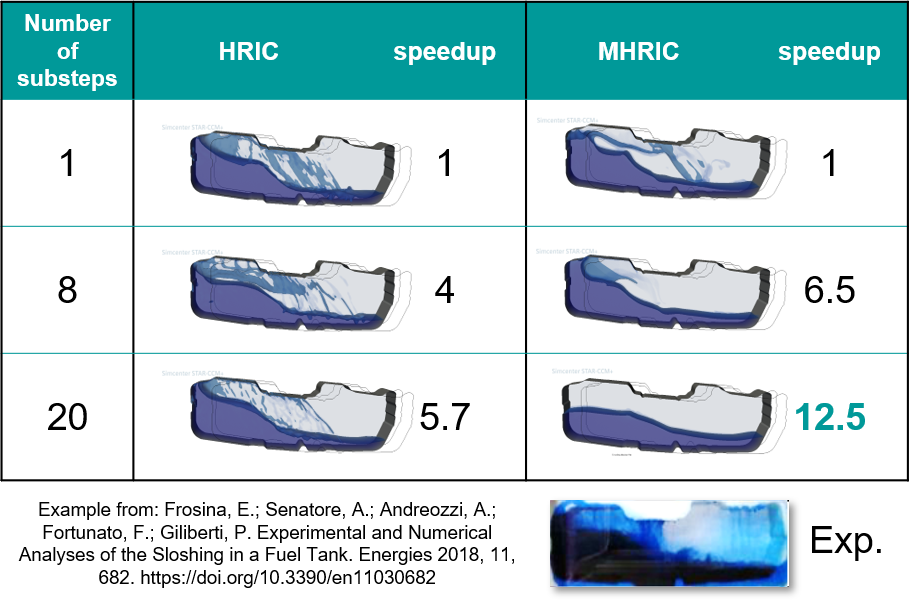
Volume Of Fluid (VOF) simulations, while a very important method for many applications that involve free surface flows, tend to be either computationally expensive for low time steps or produce inaccurate results for too large ones.
In Simcenter STAR-CCM+ 2022.1 we have made the simulation of free-surface flows much faster and easier with two significant enhancements, Implicit Multistep for VOF and the Modified HRIC (High-Resolution Interface Capture) scheme.
The newly implemented implicit multi-stepping for VOF enables you to accelerate VOF simulations by allowing a larger flow timestep while solving for the volume fraction in a user-specified number of sub-steps within the flow timestep. In practice, at least a 3x-5x speed-up can be achieved in most cases without compromising stability or accuracy.
Whilst implicit multi-step brings improvements in speed to VOF, the Modified HRIC scheme in Simcenter STAR-CCM+ 2022.1 brings improved robustness. It reduces the chance of artifacts at the free surface, results in improved convergence and mass balance, and a reduction or removal of spurious small time and length scales which can increase simulation run times significantly.
Used together, these two features allow you to run stable, yet faster VOF simulations. Combined they offer the potential for VOF simulation speed-ups by up to an order of magnitude.
These are just a few highlights in Simcenter STAR-CCM+ 2022.1. Those features will enable you to design better products faster than ever, turning today’s engineering complexity into a competitive advantage.


